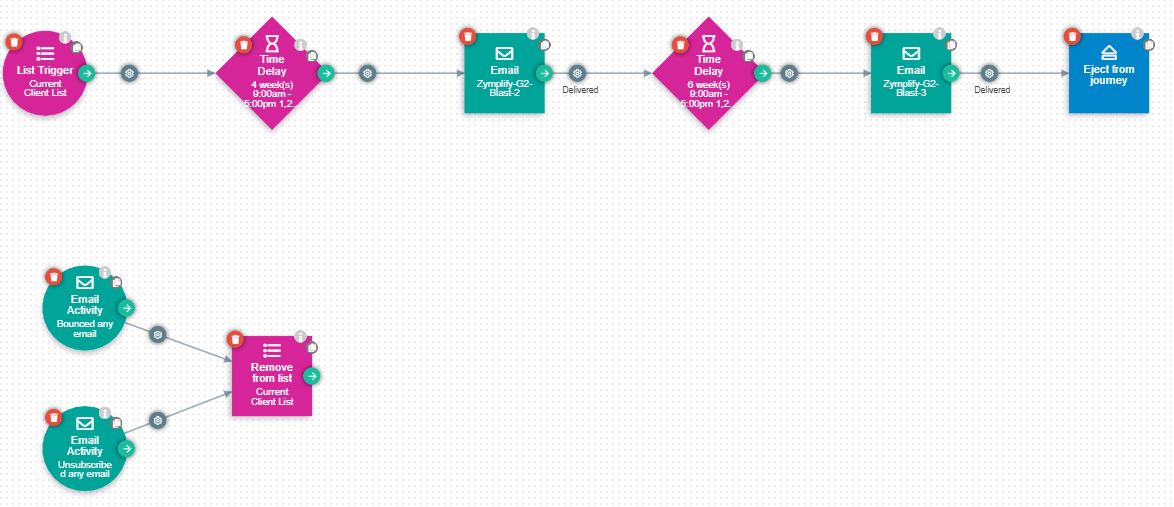In Marketing 101, and all business classes I suspect, we are first taught the importance of being both efficient and effective. Working efficiently means doing things right, whereas working effectively means doing the right thing. And doesn’t everyone want to do the right things the right way? Since working towards our business goals relies largely on executing marketing strategies efficiently and effectively, how do marketing leaders ensure that this is the case?
With data. More specifically, access to quality data at volume. The explosion of the amount of accessible data over the past 5 years has increased the number of opportunities available to marketers to reach the right people, in the right place, at the right time.
In this blog, we’ll address the barriers that marketing leaders come up against when executing marketing strategies, as well as explain the 3 ways data can empower marketing leaders to be more efficient and effective, and drive more value for their organisations using:
1. Detailed Targeting
2. Marketing Analytics
3. Collaboration
Challenges to Working Efficiently and Effectively
As marketers, we all know that one of the first right things to do when planning and executing a marketing strategy is to clearly define and reach your target audience. B2B focuses on finding the decision-maker within a business and the internal influencers. However, as the B2B buyer journey has evolved to a more digital-first approach over recent years, it is becoming more difficult for marketing leaders to effectively identify and reach live in-market buyers early.
Additionally, marketing leaders must identify at what stage in the buyer journey each prospect is in and deliver the right marketing message that resonates with that individual. And of course, every effective marketing message has one thing in common – personalisation. To succeed in delivering an effective marketing strategy, marketing leaders must get up close and personal with data.
As post-pandemic boardrooms are casting an extra magnified eye on overall business spending, the task of a modern marketing leader is to generate value for their business most efficiently.
In recent times, a common solution for B2B organisations to work more efficiently is by aligning the sales and marketing departments. Yes, you read that correctly – sales and marketing working together. And yes – I have seen the LinkedIn memes. Previously in competition over what department generates the most leads, and consequently the most revenue to the business. Research has shown that creating a more collaborative environment has positive effects on the bottom line. The challenge for marketing leaders is to help make that happen.
An additional challenge for marketing leaders when their goal is to work more efficiently is prioritising where to concentrate their often limited resources. Which horse should you back? Which strategy will work best? Which channel or channels do you put more energy and budget towards? The answer usually lies within the data.
How Data can help make you more Efficient and Effective
1. Detailed Targeting
If you were a contestant on Family Fortunes and were asked ‘how data can help make you be more efficient and effective at your job’ your answer would most likely be more detailed targeting. In a world where cutting through the noise and catching a buyer’s attention is becoming increasingly difficult, according to Google Think, relevance will be just as important as reach.
80% of buyers are more likely to do business with a brand that provides a personalised experience from start to finish. Moreover, only 16% of the buyer journey is spent talking to sales, so the tasks of delivering this personalised experience lie squarely on the shoulders of marketing leaders.
So how can data aid the marketer in their mission to create personalised brand experiences? By using intent data sources from the get-go. Intent data sources find buyers who are showing signs of actively looking for a product or service, giving marketers access to not only a pool of prospects in their target audience, but also the information they can use for personalisation.
Using intent data, we can find out information about a prospect’s company size, role, topics that they have liked, events that they have shown interest in, and if they have visited certain website pages. We can then infer at what stage of the buyer journey each prospect is in and what are their specific pain points and goals.

For example, at Zymplify when prospects have shown an interest in the topic ‘marketing automation software or similar, we infer that they are in the very early stages of the buyer journey and serve them top of the funnel content relevant to them.
When prospects have visited our website, and specifically our pricing pages, we can infer they are in the middle of the funnel and serve them corresponding content that will encourage them to take the next step.
Intent data ensures that marketing strategies are more effective. However, it is Surge that ensures they are efficient. Surge is Zymplify’s platform tool that prioritises buyers signalling the highest level of interest. Once a prospect shows more than one of our 6 Pillars of Intent, they are pushed to the top of the list for targeting.

Surge helps marketing leaders to be more efficient by enabling them to prioritise their time and resources by focusing on the prospects most likely to convert.
Download the Surge Fact Sheet to find out more.
2. Marketing Analytics
Sir Francis Bacon in 1597 said ‘knowledge is power’, and more than 400 years later, when data is a valuable currency, no words could resonate more. For marketing leaders to do the right things in the right way, they must first have access to information that can help them understand what the right things are and what way to execute them is best. With the imminent departure of third party cookies in 2023, marketing leaders must prepare for how they are planning to track marketing activities and customer behaviour in the future.
There are a variety of factors for marketing leaders to consider when choosing which channels to focus on and be more efficient and effective. Which channel generates the most revenue? Where do our website visitors come from? And remember, not all organic traffic is down to that excellent SEO strategy. Which channel is the most cost-effective? Right down to the individual channel metrics. The mind can get truly blown by the volume of data available.
Never fear though, at Zymplfy we made it our priority to simplify all these data points into actionable insights for marketing leaders like you.
Our Ad Performance tool allows you to directly compare each ad platform’s performance against the other. Making it easier for you to make quick decisions that increase results. Seeing more traffic to your website from Google Display Ads AND the cost per click is lower than social advertising. Let’s allocate more budget to display and increase website traffic even more.

Marketing analytics are crucial when calculating marketing return on investment. Did you know that 45% of CFOs have declined or not fully funded a marketing proposal as it lacked a clear line to value? To be convinced to increase spending on Google Ads, sign off on a new website, or invest in an influencer marketing strategy, the boardroom must be able to see a tangible increase in revenue. With access to marketing analytics data, marketers can attribute spending on certain marketing tactics to an increase in sales.
At Zymplify, we use clear visuals to make it easier or dare I say more efficient, for marketing leaders to attribute spending or activity on certain channels to an increase in leads right the way through to revenue generated.

Being able to clearly show how a certain marketing activity has generated revenue in the past, ensures the boardroom won’t be able to put up a fight against future marketing campaigns.
3. Collaboration
A clear challenge for marketing leaders is to work towards aligning sales and marketing teams within their organisation with the ultimate goal of working more efficiently and effectively as a unit. Sounds simple, right? Not at all, but a necessary step to grow your business at scale.
Here’s how this would look. Marketing research would tell us that it takes on average 7 to 9 customer touchpoints for potential prospects to consider purchasing your product. Some sales cadences even consist of 29 touchpoints to ensure success. Getting your brand consistently in front of these buyers this many times is only made possible with data. And if sales and marketing are singing off the same datasheet so to speak, it becomes very achievable.
A legacy issue from teams working separately is data silos. A lot of existing IT infrastructure was not kitted out for the explosion in data and organisations beginning to see the advantages of having a single view of their customers and suppliers. This has resulted in data silos across organisations.
What does this mean for marketing leaders? When the task is to deliver an exceptional personalised customer experience, the last thing you would want to happen is miscommunication between marketing, sales, and the customers.
Picture this. Sales have been speaking to a potential buyer for months? Introducing the product, and how it will help the business solve its problems. The business is ready to sign on the dotted line, and suddenly they get an influx of marketing emails and ads aimed at top of the funnel buyers. Embarrassing for everyone involved. And easily avoided by taking a collaborative approach between sales and marketing teams.
At Zymplify, we’ve created our data, marketing, and sales platform to avoid this very issue. Easily move leads and deals out of marketing email lists and remarketing ads using marketing automation in Workflow. Create lists of prospects for sales and marketing to target at the same time, creating multiple touchpoints at the right time that keep your brand top of mind.

With sales and marketing teams working from one centralised platform it makes it easy to do all the right things the right way. To execute precision sales and marketing strategies that generate leads and grow value for your business.
See Zymplify in Action
If you’re interested in finding in-market buyers that fit directly with your ideal customer profile and move them flawlessly from potential prospect to happy customer, sign up for Zymplify’s free trial.
Want to talk to a Zymplify expert on how our platform could work for your business personally? Then sign up for a free personalised demo here.

